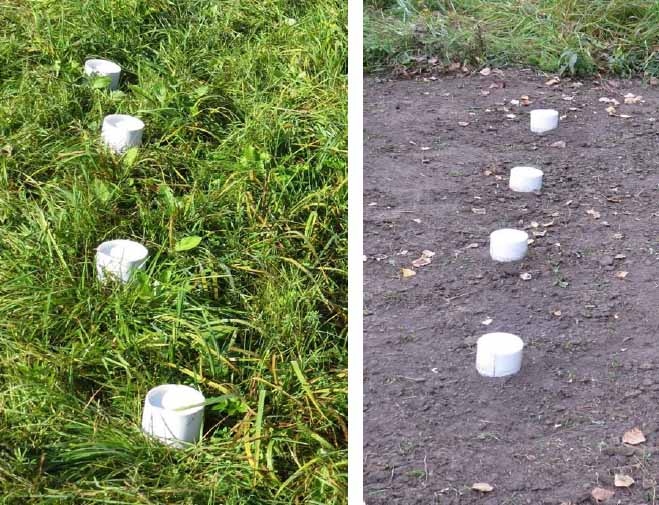Methodology of quantitative determination of soil respiration in field conditions
DOI:
https://doi.org/10.31251/pos.v8i3.334Keywords:
CO2 emission from soil; chamber method; absorption method; components of soil respiration; carbon balance in soil.Abstract
The aim of the study was to improve methodology for determining the actual average daily rate of CO2 emission from soil in field conditions.
Location and time of the study. The method was tested in 2024 on dark gray forest soil ((Luvic Greyzemic Phaeozem (Siltic)) in the right-bank part of the Novosibirsk suburbs (Akademgorodok area) with coordinates 54°51′03′′ N, 83°11′00′′ E.
Method. The methodology is one of the modifications of the absorption method for measuring soil respiration. It is based on the absorption of carbon dioxide, diffusely released from soil, by an alkali solution. In the field, a cup with an alkali solution is placed on the soil surface in an insulating vessel and closed with a lid. After exposure, which, depending on the intensity of respiration and the purpose of the study, can be several hours, a day, or many days, the alkali residue is titrated with acid and the amount of CO2, released from soil, is calculated.
Results. The methodology was improved by a change in the design of the isolator vessel, the parameters of the absorber and the measurement procedure, which made it more feasible and convenient for mass use, allowing also to significantly increase the efficacy of the work. A thin-walled PVC pipe with an internal diameter of 10 cm (cross-sectional area of 78,5 cm2) and a height of 15 cm is used as an isolator vessel, which is inserted into soil for 5–8 cm, and then closed with a lid for the exposure period. The absorber is 10 ml of 1N NaOH in a plastic cup with a diameter of 6,2 cm, which provides 30 cm2 of solution sorption surface, equal to 38% of the soil surface covered by the isolator vessel. The absorber is designed to capture 20–220 mg CO2 in the isolator vessel with a daily exposure, which allows measuring the intensity of soil respiration in the range of ~ 100–1200 mg CO2/m2∙h. By increasing the exposure to 96 h, the lower limit can be reduced to 25 mg CO2/m2∙h, and the upper one increased significantly by the two-stage measurement, i.e. replacing the alkali solution in the isolator vessel with a new solution 6–12 hours after the exposure start. As a result of testing the technique, reliable differences were obtained in the monthly emission of C-CO2 from the soil both related to the vegetation type (abandoned land vs. fallow) and to the vegetation period, i.e May – October. The variation coefficient of monthly emission most often did not exceed 10%, which is explained by the small area (about 25 m2) of the experimental plots and 4-fold measurement replication. During the period May – October, the dark gray forest soil under the perennial fallow lost 5,87 and under bare fallow 4,04 t/ha of C-CO2. The use of the technique in winter is limited by the freezing of the alkali solution at -3°C.
Conclusions. The article presents a methodology for quantitative determination of average daily soil respiration intensity developed on the basis of the absorption method. The parameters of the insulator and absorber vessel, as well as the measurement procedure, are substantiated, which makes it possible to measure soil respiration intensity in a wide range from 25 to 1200 mg CO2/m2∙h and more. Arguments are presented in favor of the correspondence between the data measured using the methodology and the actual CO2 emissions from the soil. The attractiveness of the method for researchers isdetermined by high accuracy (sensitivity limit ±2–3 mg CO2), labour efficiency (one employee can perform up to 50 measurements daily), the ability to carry out determinations at the same time for a large number of experimentaltreatments, no need to titrate alkali solutions immediately after exposure (this can be done once every one or two weeks), the ability to transport hermetically sealed cups with alkali, shorter time needed for t field work (only for placing and collecting cups),lower cost of the equipment and its higher availability (important for rapid organization of measurements), as well as simplicity and ease of use (in particular, alkali solutions are titrated directly in the cups).
Downloads

Downloads
Published
How to Cite
Issue
Section
License
Copyright (c) 2025 The Journal of Soils and Environment

This work is licensed under a Creative Commons Attribution 4.0 International License.






